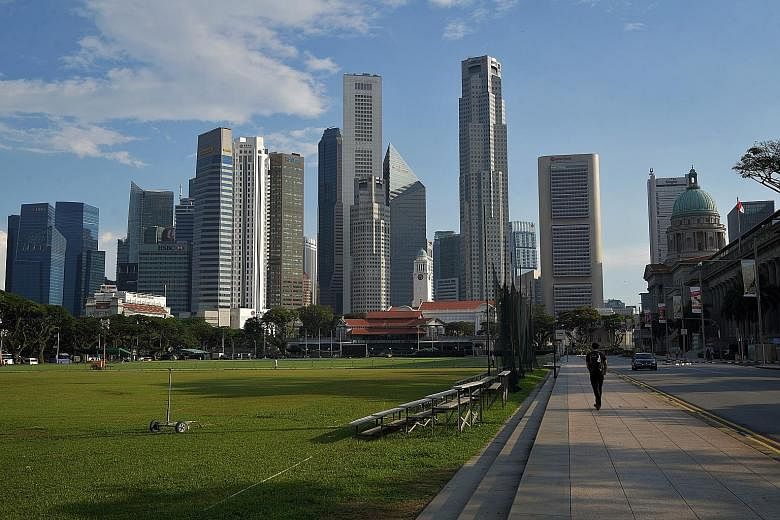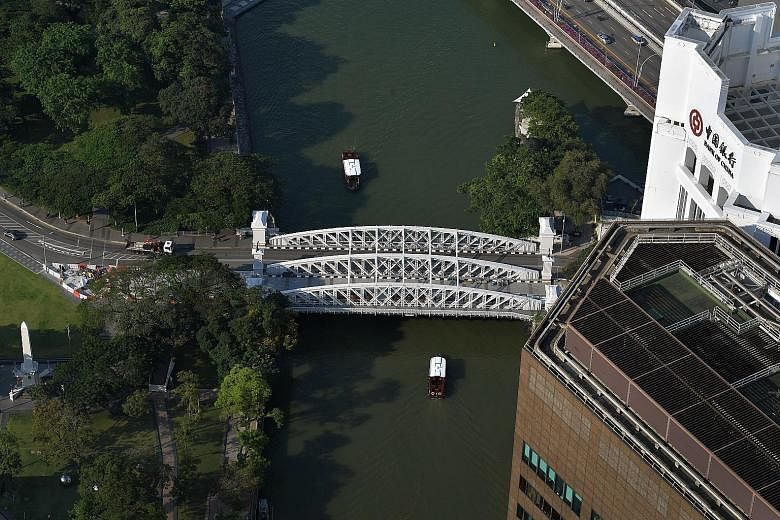Singapore's de facto town square and the site of this year's National Day Parade, the Padang, as well as the Cavenagh, Anderson and Elgin bridges in the vicinity, will be gazetted as national monuments.
The Padang will be the first green, open space to join the Republic's stable of national monuments. Likewise, this will be the first time the National Heritage Board's (NHB) Preservation of Sites and Monuments (PSM) division is adding bridges to its list.
The gazetting of the two new monuments - the bridges will be protected as an ensemble - will bring the total number of national monuments in Singapore to 74. The move is part of the authorities' commemorative efforts for the Singapore Bicentennial. This was announced by Deputy Prime Minister Heng Swee Keat yesterday.
The Padang is chock-full of history. Some evidence suggests that this was where negotiations between the British, Temenggong Abdul Rahman and Sultan Hussein Shah of Johor took place in the lead-up to the 1819 treaty that allowed the British East India Company to set up a trading post here.
DPM Heng said the Padang is a very special location and noted that the site has witnessed many historic events.
In 1959, when Singapore became a self-governing state, the Yang di-Pertuan Negara, who went on to become the first President of the Republic, Mr Yusof Ishak, was inaugurated at the Padang.
It was also where the National Coat of Arms of Singapore was launched, and, in 1966, the first National Day Parade was held.
He said: "So these are important events that mark our progress as a nation, and we are going to designate it as a national monument."
Ms Jean Wee, the director of NHB's PSM division, noted that the Padang has been a gathering point for the people of Singapore since the 1800s. During the colonial period, Chinese New Year, royal birthdays, jubilees and coronations, and occasionally Thaipusam were commemorated at the green space with displays of fireworks.
Going back further, the Padang was said to have been the site where Palembang Prince Sang Nila Utama spotted a beast, which led him to name Temasek as Singapura or Lion City.
A national monument gazette is the highest form of recognition for a structure or site's significance. Evaluation factors include its historical, architectural and social importance to Singapore's built heritage. The Padang, which is state land, is approximately 4.3ha - about the size of five football fields. The Urban Redevelopment Authority (URA) currently has guidelines on the site's usage to ensure its protection.
Architectural historian and conservator Yeo Kang Shua said the Padang is very deserving of protection. "The Padang and its surrounds took more than a century to shape into what has become the civic district. As such, the Padang needs to be understood in the historic context of the buildings around it, which include government offices, the judiciary, the legislative arm, as well as cultural and recreational institutions," he said.
NHB added that both gazettes will not change the current use of the site and structures.
On the trio of bridges, managed today by the Land Transport Authority and the Ministry of Transport, NHB said they were gazetted as they are the most architecturally significant of the 14 bridges that span the Singapore River.
DPM Heng said the bridges reflect Singapore's growth as a flourishing city and trading port.
"They speak about our link to the rest of the world," he said.
Located at the historic mouth of the Singapore River, the bridges, which were previously conserved by the URA in 2009, facilitated trade and transport links that were essential for the growth of the island in the 19th century, said NHB.
DPM Heng said the country gives special protection to its national monuments so that Singaporeans can learn more about the significance of the island's history, culture and heritage.
He added that this year's National Day Parade is of special significance.
"We are commemorating the Singapore Bicentennial and taking the opportunity to look back at our history over the last 54 years, the last 200 years, as well as even further back, the last 700 years."
• Additional reporting by Toh Ting Wei



